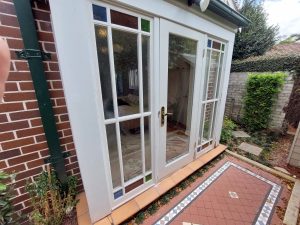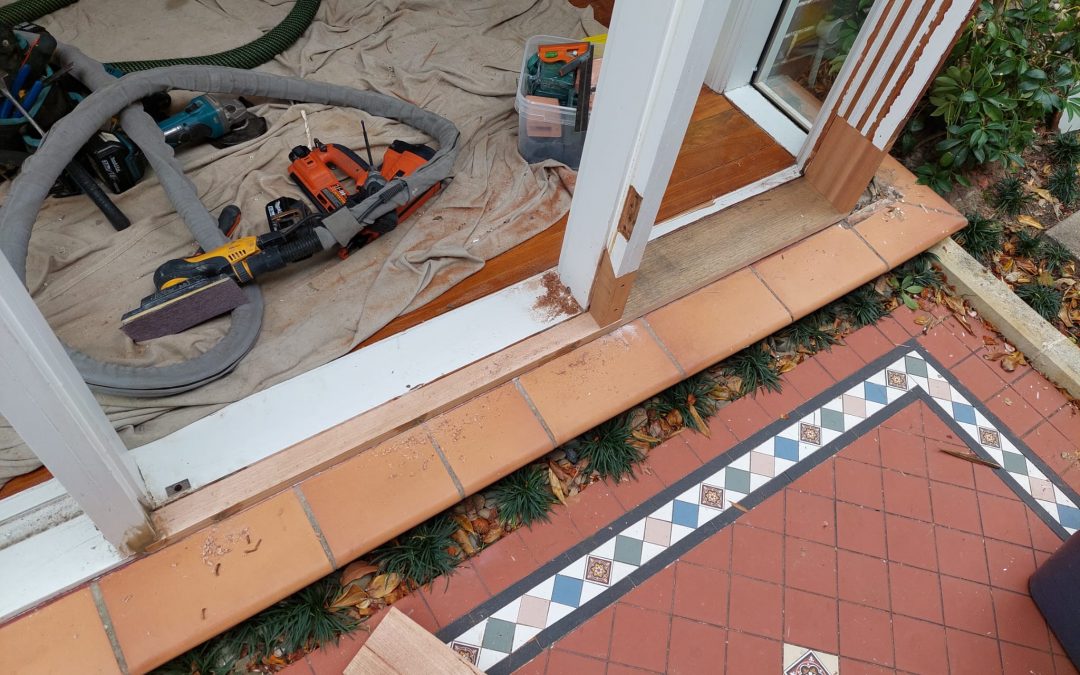Sash windows, particularly double-hung sash windows, have a rich history in Australia’s architectural landscape. These elegant windows with their sliding mechanism and versatile design have been an integral part of Australian homes for centuries.
Let’s take a step back and appreciate the origin of sash windows in Australia and explore how they have evolved over time. We’ll also look at key aspects such as fitting timber windows, draught proofing, and the techniques involved in repairing sash windows, highlighting the changes and innovations that have shaped these iconic windows.
The Origin of Sash Windows in Australia
The introduction of sash windows in Australia can be traced back to the colonial period in the late 18th century. Influenced by the architectural styles of Georgian and Victorian eras, sash windows quickly became a popular choice for builders and homeowners alike. The double-hung configuration, consisting of two vertically sliding sashes with glass panes, provided excellent ventilation while maintaining a pleasing aesthetic.
Fitting Timber Windows
In the early days, timber was the primary material used for construction. Skilled craftsmen employed traditional joinery techniques to create sturdy and visually appealing timber frames. Fitting timber windows required precision and attention to detail. Craftsmen balanced the sashes within the frame, ensuring they operated smoothly and fit snugly to prevent air infiltration.
The fitting process involved carefully measuring the opening and creating custom-made frames that perfectly matched the window dimensions. The sashes were designed to slide effortlessly, aided by weighted mechanisms. Typically, lead or cast-iron weights were concealed within the window frame, counterbalancing the sashes to allow smooth operation. This intricate balance ensured that the windows could be opened and closed with ease.
Draught Proofing
Over time, sash windows became notorious for their potential draught issues, leading to efforts to improve their energy efficiency. Various draught-proofing methods were developed to address this concern. Traditionally, the weighted sashes were enclosed in slim profiles, such as timber boxes or metal sleeves, to reduce air leakage.
To enhance insulation further, additional measures were taken. Felt or brush strips were often installed along the meeting rails and perimeter of the sashes to minimize draughts. These strips created a seal between the sashes and the frame, reducing air infiltration and improving thermal efficiency. Furthermore, the careful fitting of sashes within the frame played a crucial role in preventing draughts.

Repairing Sash Windows
As sash windows aged, maintenance and repairs became essential for their longevity. Expert window restorers and craftsmen emerged to address the specific requirements of sash window restoration. These professionals carefully assessed the condition of the frames, sashes, and hardware, undertaking necessary repairs while preserving the window’s original character.
Common repairs included replacing damaged or decayed timber components, such as sash cords, pulleys, and meeting rails. Techniques such as timber splicing and epoxy resin repairs were employed to restore structural integrity. Additionally, specialist glazing methods were used to replace cracked or broken glass panes while matching the original aesthetics.
Evolution and Modern Innovations
As architectural styles evolved, so did the design of sash windows in Australia. The introduction of new materials, such as aluminum and uPVC, offered increased durability, reduced maintenance, and improved thermal performance. Modern sash often incorporate double glazing, which enhances insulation and reduces noise pollution.
Advancements in manufacturing techniques have allowed for the production of windows with sleeker profiles and a wider range of finishes, catering to contemporary design preferences. While traditional timber sash windows still hold their charm, these modern alternatives provide homeowners with options that blend the timeless appeal of sash windows with the benefits of advanced materials and technologies.
The Benefits of Sash Windows in the Australian Climate
Sydney, New South Wales, experiences a temperate climate with mild winters and warm summers. During the summer months of December to February, temperatures range from 25 to 30 degrees Celsius (77 to 86 degrees Fahrenheit), occasionally reaching above 35 degrees Celsius (95 degrees Fahrenheit) during heatwaves. Autumn brings milder and pleasant weather with average temperatures between 20 and 25 degrees Celsius (68 to 77 degrees Fahrenheit).
Winters in Sydney are generally mild, with temperatures averaging from 15 to 20 degrees Celsius (59 to 68 degrees Fahrenheit), and nights can drop to 8 to 12 degrees Celsius (46 to 54 degrees Fahrenheit). Spring sees increasing temperatures, ranging from 18 to 24 degrees Celsius (64 to 75 degrees Fahrenheit), with milder nights and decreasing rainfall. Overall, Sydney’s climate offers warm summers, mild winters, and moderate rainfall throughout the year.
To this day, they are still a popular choice for Australia homes for the following benefits:
Ventilation and Airflow
Australian climates can be diverse, with regions experiencing both hot and cold weather. Double-hung sash windows provide excellent ventilation options, allowing you to control the amount of airflow in your home. By opening both the top and bottom sashes, you can create a “chimney effect” that draws cool air in from the lower portion while allowing warm air to escape through the upper part. This natural ventilation is especially useful during hot summer months, helping to maintain a comfortable indoor environment.
Energy Efficiency
With proper installation and draught-proofing techniques, sash windows can contribute to energy efficiency in Australian homes. By reducing air leakage and draughts, these windows help to minimize heat loss during colder periods and prevent warm air infiltration during hotter seasons. Modern sash windows often incorporate double glazing, which provides an additional layer of insulation, further improving energy efficiency by reducing heat transfer through the glass.
Versatility in Design
Sash windows come in various styles and designs, allowing you to choose the option that suits your architectural preferences and functional needs. Whether you have a traditional heritage home or a contemporary dwelling, sash windows can be customized to complement the overall aesthetic. Their timeless elegance and versatility make them a popular choice among homeowners and architects alike.

Preservation of Heritage
In Australia, where historical architecture is highly valued, sash windows play a significant role in preserving the character and heritage of older buildings. When restoring or renovating heritage homes, maintaining the original sash windows or replicating them with accurate details is crucial. Sash windows help retain the charm and authenticity of these buildings while benefiting from modern improvements in materials and techniques.
Sound Insulation
Depending on the location of your home, noise pollution can be a concern. Double-hung sash windows with double glazing can significantly reduce the transmission of external noise, providing a more peaceful and serene indoor environment.
The origin and evolution of double hung sash windows in Australia represent a fascinating journey through time. From their introduction during the colonial period to the modern innovations we see today, they have evolved to meet changing design trends and technological advancements. The techniques involved in fitting timber windows, draught proofing, and repairing sash windows have all contributed to the preservation and improvement of these iconic windows. As they continue to grace Australian homes, sash windows serve as a testament to both the enduring elegance of traditional craftsmanship and the ongoing pursuit of energy efficiency and architectural innovation.
Sash windows have stood the test of time, providing not only functional benefits but also contributing to the architectural charm of homes across the country. Whether it’s the elegance of double-hung sashes, the craftsmanship of timber frames, or the modern innovations in materials and energy efficiency, sash windows continue to be a preferred choice for homeowners. As they adapt to the diverse climates and design preferences of Australia, sash windows remain a symbol of timeless beauty, functionality, and the enduring appeal of classic craftsmanship in the architectural landscape.

